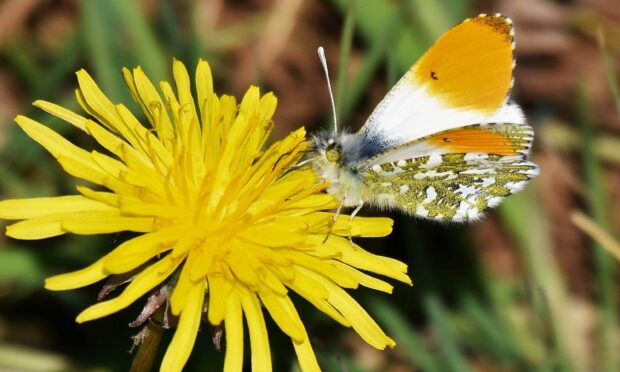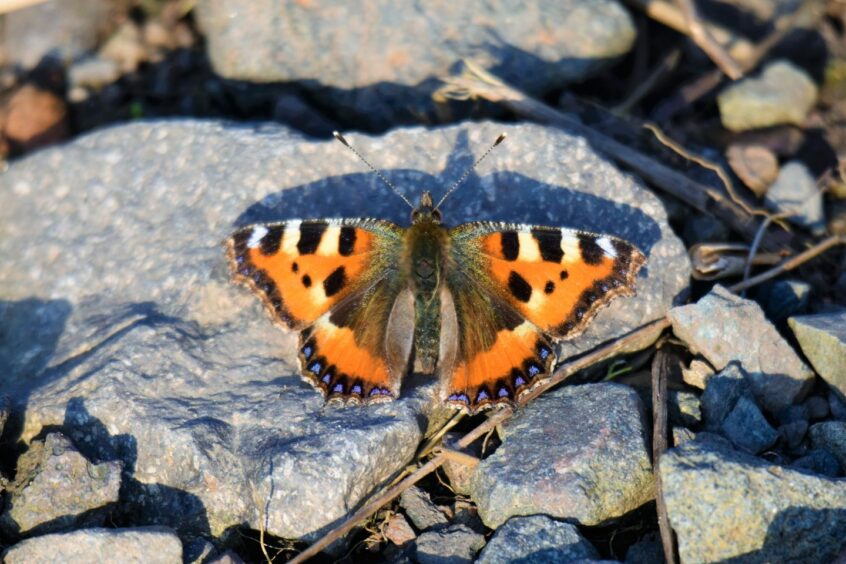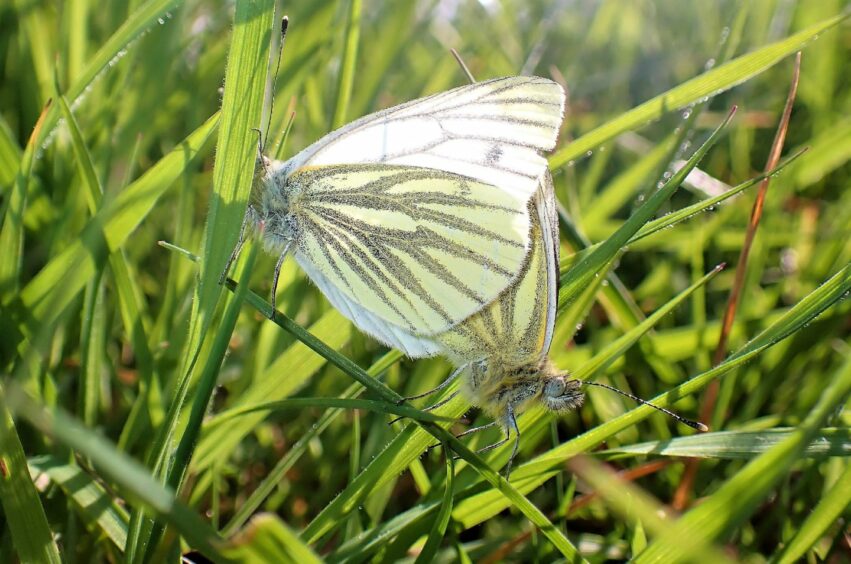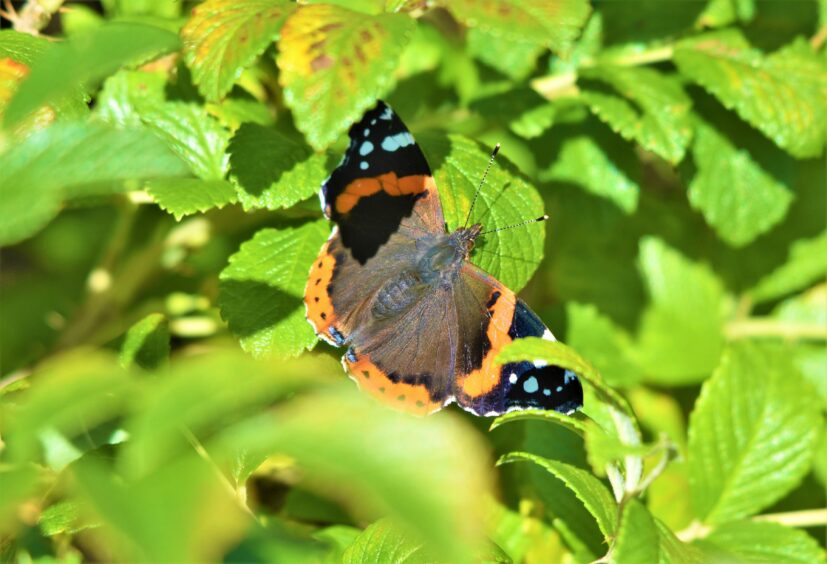Butterflies, butterflies, everywhere there were butterflies, including peacocks, small tortoiseshells, and green-veined whites as they danced and twirled in the air just above the flower-spangled meadow on the haugh of my local river.
They were mesmerising, and it was interesting to see the peacocks and small tortoiseshells engaging with one another in the air.
Was it a case of mistaken identity and did they think they had chanced upon a potential mate from one of their own kind?
Or perhaps it was a territorial engagement – effectively saying, ‘this is my patch, now get on your way!’
Fascinating to watch
Whatever the case, they were fascinating to watch, so I sat on a tumbled tree trunk and breathed-in the wonderful atmosphere of the sun-dappled flood meadow.
A glint of white caught my eye in the grass, so I crouched down and parted the green blades.
Here, two green-veined white butterflies were joined together in flagrante.
Normally, they are skittish creatures and quick to take to the air, but because they were love-locked tail-to-tail, flight was impossible, so they had to endure the indignity of my surprise intrusion.
I examined them for a short while, enthralled by the subtle, lime-green veins on the undersides of their gossamer-like wings.
Delicate
Butterflies are so delicate in their construction, but they are surprisingly tough creatures, with some species hibernating over the winter as adults, and others, such as the painted lady, able to embark upon marathon migrations.
I left the mating green-veined whites in peace and returned to my tree-trunk seat.
Vast swathes of cuckooflower swept across the meadow, their lilac-petalled heads nodding in the gentle spring breeze.
According to John Gerard, the 16th century herbalist, the plant is so-called because it blooms “for the most part in April and May, when the cuckoo begins to sing her pleasant note without stammering”.
The plant is also known as ‘lady’s-smock’, possibly because the flowers are slightly cupped or ‘frocked’, although the name may also allude to cavorting between men and women in spring-time meadows.
Frustrating to photograph
It is a lovely flower, and the plant is important for breeding orange-tip butterflies, which also abound on my local haugh at this time of year.
Orange-tips are frustrating to photograph, and when a male zipped past me, I tried to follow his progress in the hope he might settle.
But every time he seemed to be on the verge of alighting, a new zest of life filled his wings, and he spiralled up into the air once more.
On wandering homewards, I stumbled upon small white-flowering plant called meadow saxifrage, which is scarce in my area and declining nationwide due to damp meadows being built upon or drained for other land-uses.
Pliny the Elder claimed meadow saxifrage had special medicinal powers that were effective in treating gallstones.
It is doubtful whether any credence can be lent to such a fanciful notion, but the thought that it might prove an effective treatment for gallstones must have given some solace to those inflicted by this painful condition.













